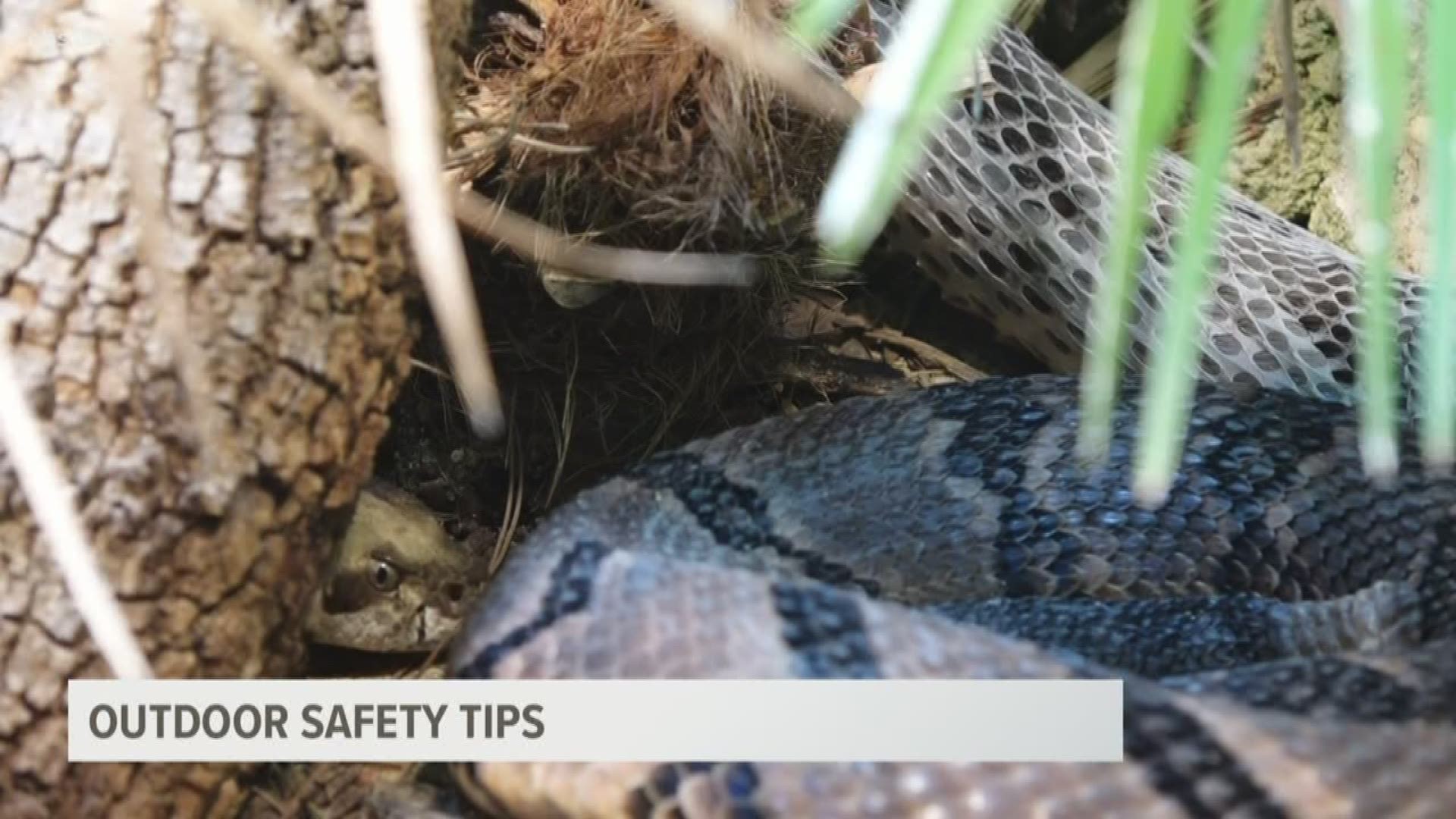TYLER, Texas — As Texas state leaders continue to ease COVID-19 restrictions, Texans are flocking to parks and lakes to enjoy the sunshine and warm weather.
However, the warmer weather also brings out potentially dangerous creatures. At the top of the list for many people are snakes.
Texas state parks are now open, as are many city and county outdoor areas. As people enjoy these areas there are some things to watch out for.
“This time of year, snakes are out. We have had some calls about bees and things like that," Gregg County Game Warden Todd Long said. "The critters are out, especially around low lying areas around water. So just be careful. You might want to educate yourself on the different types of snakes which ones are venomous."
Long says his rule is to avoid wildlife whenever you find it.
“Rule of thumb is we tell people to leave it alone," Long explained. "The most common two [snakes] that I come across, and I would say most people in East Texas see, would be the copperheads and the water moccasins, also known as cottonmouths. They're out and about in full force."
WATER MOCCASINS (COTTONMOUTHS)
The Western Cottonmouth, the only subspecies found in Texas, are typically found swamps, waterways, coastal marshals, rivers, ponds and streams across the eastern half of the state.
Cottomouths are about 3.5 feet in length and can come in a variety of colors including dark brown, olive-brown, olive green or lack. They also have wide, dark bands which may be more distinguishable in some individual snakes than others. The snake my also show white tissue inside its mouth when it is threatened.

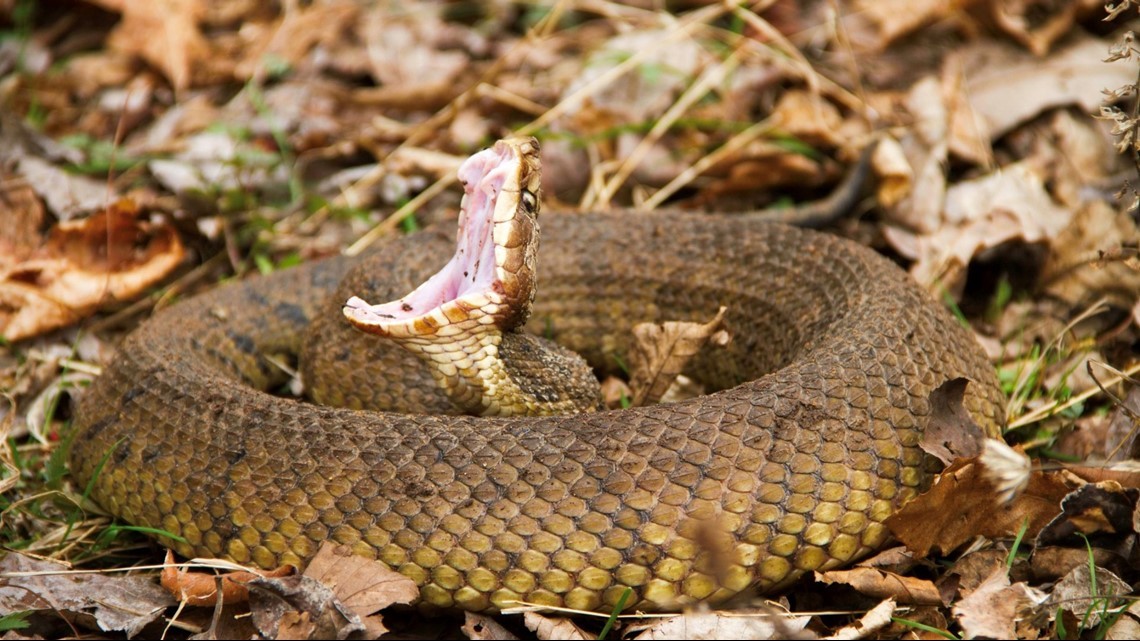
COPPERHEADS
The Copperhead is typically found in rocky areas and wooded bottomlands. Copperheads also populate near bodies of water and weed-covered vacant lots.
They have chestnut or reddish-brown crossbands on a lighter-colored body.
The most common subspecies in East Texas are the Southern Copperhead, which can measure between 20 to 30 inches.
The two other types of copperheads, Broadbanded Copperhead and Trans-Pecos Copperhead are also found in Texas. The Broadbanded Copperhead is typically found in central and western Texas and can measure up to three feet in length. The Trans-Pecos Copperhead is roughly the same size of the Southern Copperhead and can be found in the southern portion of the Trans-Pecos region.

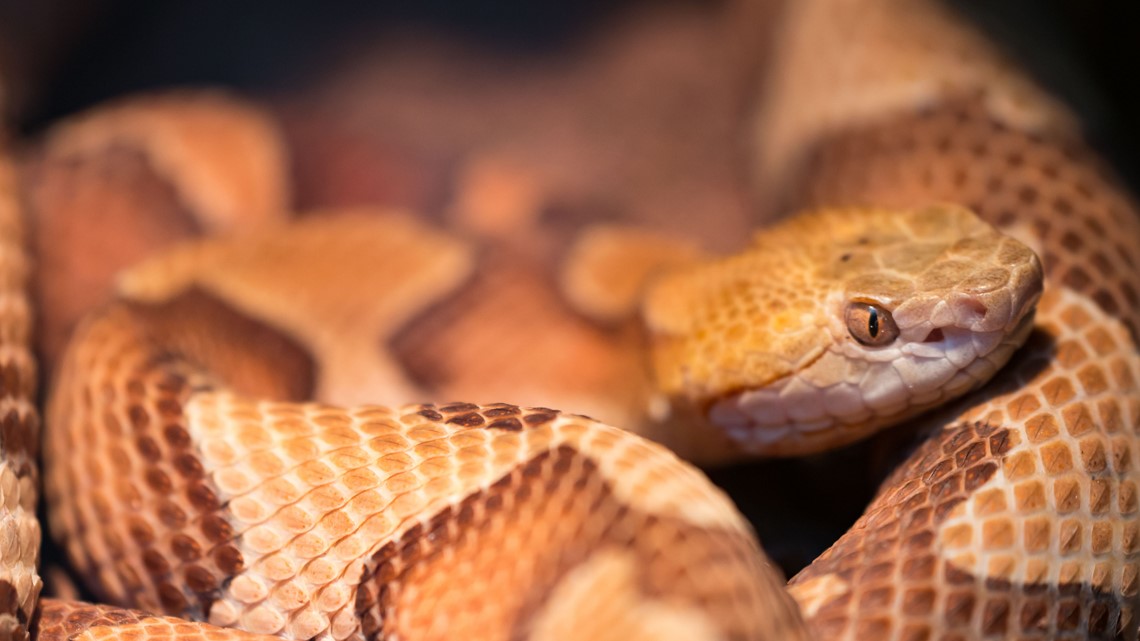
RATTLESNAKES
There are six species of rattlesnakes in Texas: Western diamondback, Timber rattlesnake, Mottled Rock rattlesnake, Banded rock rattlesnake, Blacktail rattlesnake, Mojave rattlesnake, Prairie rattlesnake. They can be found in most portions of the state depending on the subspecies.
While rattlesnakes vary in color, length and patterns, their distinctive rattle at the end of their of their tail makes them distinguishable from any other variety of the snake. The rattle is used to as a warning when a snake is threatened.
Rattlesnakes can be found in a number of land-based habitats including: forests, rangeland, prairies, and developed land.

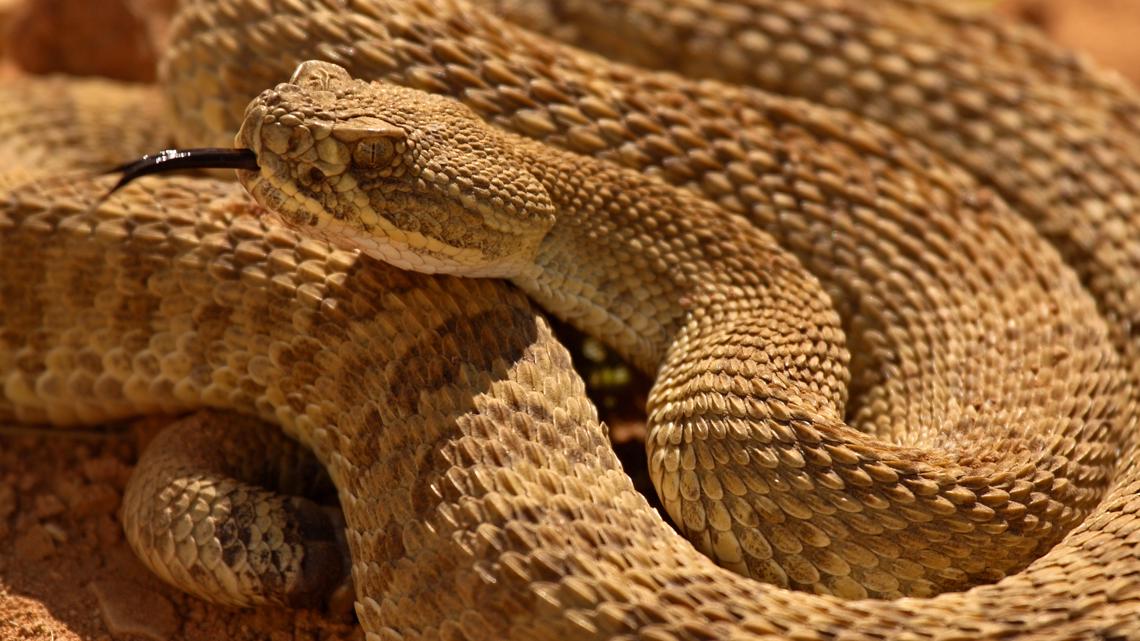
CORAL SNAKES
Coral snakes, a member of the cobra family, exist the southeastern part of Texas.
The are brightly colored with a broad black ring, a narrow yellow ring and a broad red ring. While there are non-venomous snakes that look similar, the coral snake is the only snake species where the red and yellow rings touch. (“Red touch yellow, kill a fellow.”)
While they are not as aggressive as pit vipers (cottonmouths, copperheads and rattlesnakes), their venom is potent.

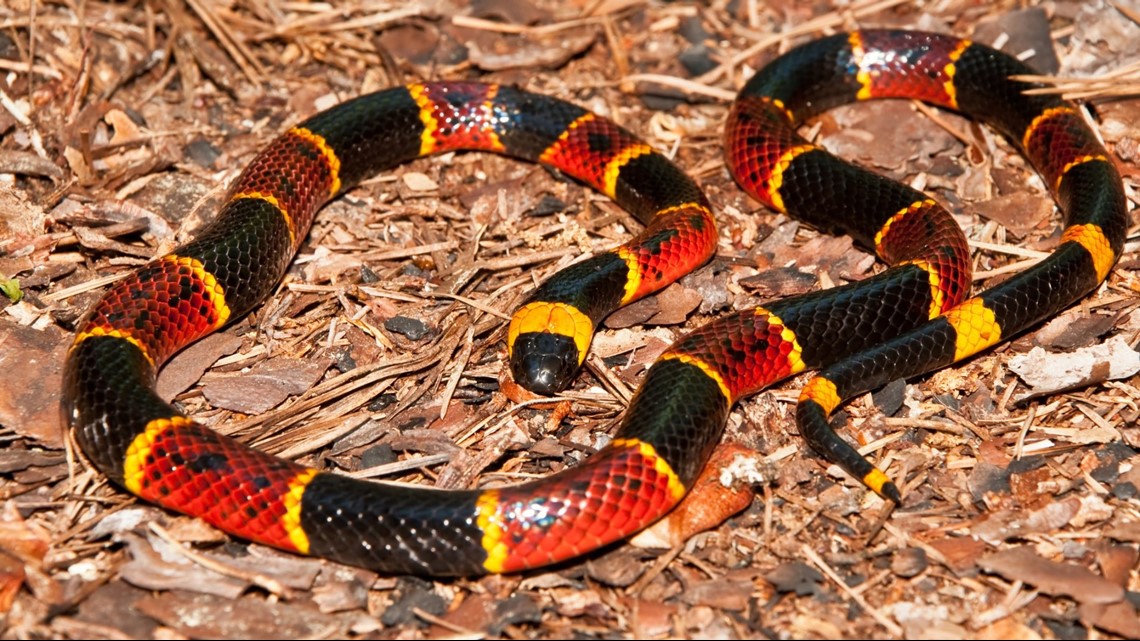
TREATING A SNAKEBITE
If you or someone you are with are bitten by a snake, the most important thing to do is to get away from it as quick as possible. Stay calm and remove all jewelry and restrictive clothing that may restrict blood flow if swelling happens. Do not apply ice, a tourniquet or make an incision as this may cause more harm than good.
Also do not administer antivenom unless you have received proper training.
According to Texas A&M University, you need to get to an emergency care facility as soon as possible. It is important that you try to identify the snake for your doctor so the doctor can give the correct antivenom.
If you are bitten by a non-venomous snake, first aid should be treated as if it is a puncture wound. However, check with a doctor if you are not sure whether the snake was venomous or not.
Long says unless an animal is in a dire situation, it is best to leave it where you found it. Many times, that animal does not need your help.
“When people take in wildlife this time of year, usually with good intentions, sometimes it creates a ripple effect and an undue burden on the resources that these rehabilitators have," Long said. "But if it has to be taken in, absolutely call your local game warden. Or better yet, the rehabilitator. They're online on our website.”
To learn more about snakes in Texas, both venomous and non-venomous, read this report by Texas A&M professor Dr. Maureen Frank or visit the Texas Parks and Wildlife snake safety section on their website.

